Table of Contents
The Gambian flag, also known as the flag of Gambia, holds a significant place in the nation’s history and culture. With its vibrant colors and meaningful symbolism, it represents the Gambian identity and heritage. In this article, we will delve into the intriguing aspects of the Gambia flag, its design, historical background, and the symbolism behind its elements.
The Gambia flag features three horizontal bands of red, blue, and green. The red represents the sun, the blue stands for the Gambia River which runs through the country, and the green symbolizes the land. Two thin white stripes border the blue band, signifying peace and unity.
Gambia Flag: Colors and Symbolism
- The flag of Gambia features three horizontal bands of red, blue, and green, with two white stripes bordering the blue.
- The red color symbolizes the sun and the ardor of the people.
- The blue color represents the Gambia River, which is central to the nation’s identity.
- The green color symbolizes the fertile lands of Gambia and its agricultural heritage.
- The white stripes represent peace, unity, and harmony among the Gambian people.
- The flag’s design reflects the nation’s aspirations, cultural heritage, and unity among the Gambian people.
Flag of Gambia
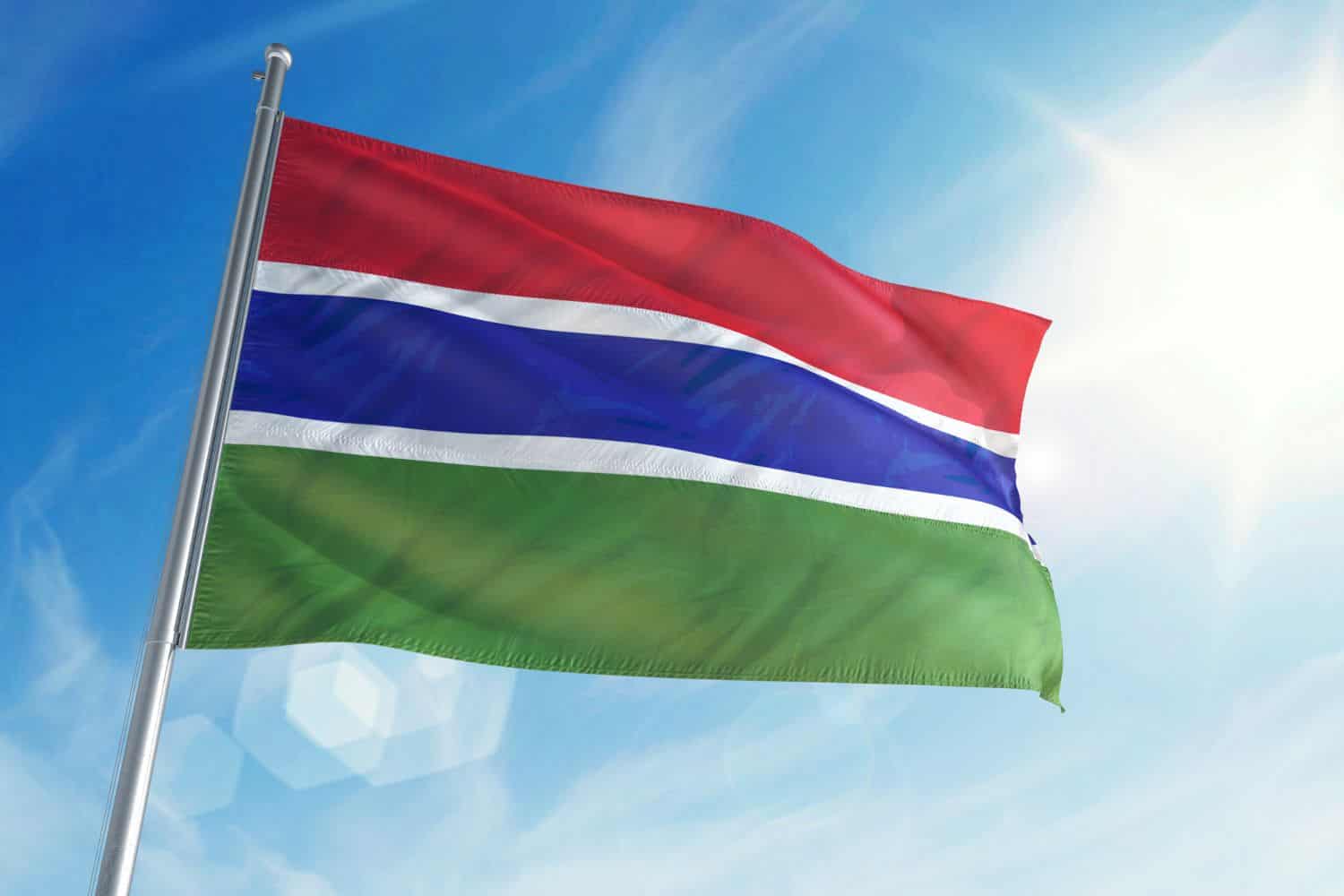
The flag stands as a powerful symbol that encapsulates the cultural significance and spirit of the nation. Its design consists of horizontal stripes in red, blue, and green, separated by narrow white bands. The red symbolizes the sun and the savannah, showcasing Gambia’s warm and vibrant landscape. The blue represents the Gambia River, a central element to the nation’s identity and its lifeline. The green stands for the lush forests and the agricultural wealth of the country. The white bands signify peace and unity.
The history of the flag is intertwined with Gambia’s rich heritage and journey to sovereignty. Adopted on February 18, 1965, the flag represents the unity and aspirations of the Gambian people.
Beyond its aesthetics, the flag from Gambia carries deep symbolic meanings. The colors reflect the values and aspirations of the Gambian people, symbolizing warmth, nature, peace, and unity. The horizontal stripes and their arrangement encapsulate the essence of Gambia’s geographical and cultural context. It embodies Gambia’s cultural heritage and serves as a reminder of the nation’s resilience and unity.
National Flag Etiquette and Protocol
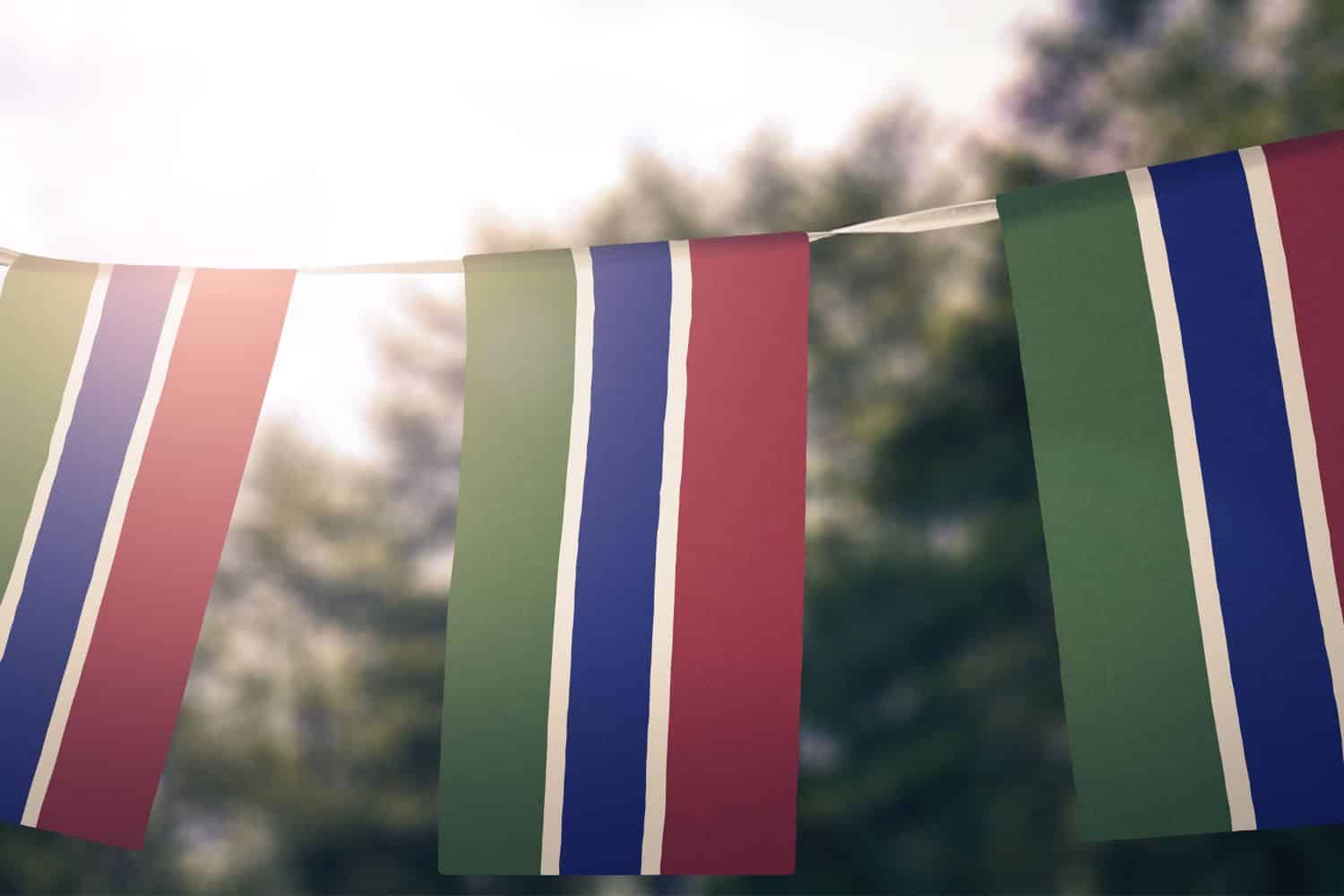
Respecting the proper usage and display of the Gambian flag is of utmost importance. Understanding flag etiquette is essential, especially during national events and ceremonies. Learn about the protocols governing the handling, hoisting, and lowering of the flag. Discover the appropriate procedures for retiring or handling damaged flags, ensuring they are accorded the respect they deserve.
- Proper Handling: The Gambian flag should be handled with care and respect, ensuring it is not allowed to touch the ground or floor. It should be held upright and not dragged.
- Hoisting and Lowering: When hoisting the flag, it should be raised briskly and lowered ceremoniously. It is customary to hoist the flag at sunrise and lower it at sunset, although this may vary depending on the occasion or specific guidelines.
- Displaying the Flag: The Gambian flag should be displayed with the red stripe at the top, followed by blue and then green, with white borders in between the colors. It should be flown freely and not entangled or obstructed.
- Half-Staff: Lowering the flag to half-staff is a gesture of mourning or respect. This should be done on specific days of remembrance or when directed by authorities to honor national tragedies or the passing of significant figures.
- Flag Retirement: When a Gambian flag becomes damaged, torn, or worn out, it should be retired in a dignified manner. This can involve burning it in a respectful and solemn ceremony, following appropriate guidelines and local regulations.
- Flag Size and Placement: The size of the Gambian flag displayed should be proportionate to the size of the flagpole or display area. It is recommended to consult local guidelines or authorities for specific rules regarding flag size and placement.
- Respectful Disposal: If a flag cannot be retired through burning, it should be disposed of in a respectful manner. This can involve burying it or handing it over to authorized organizations that specialize in flag disposal.
Interesting Facts and Trivia
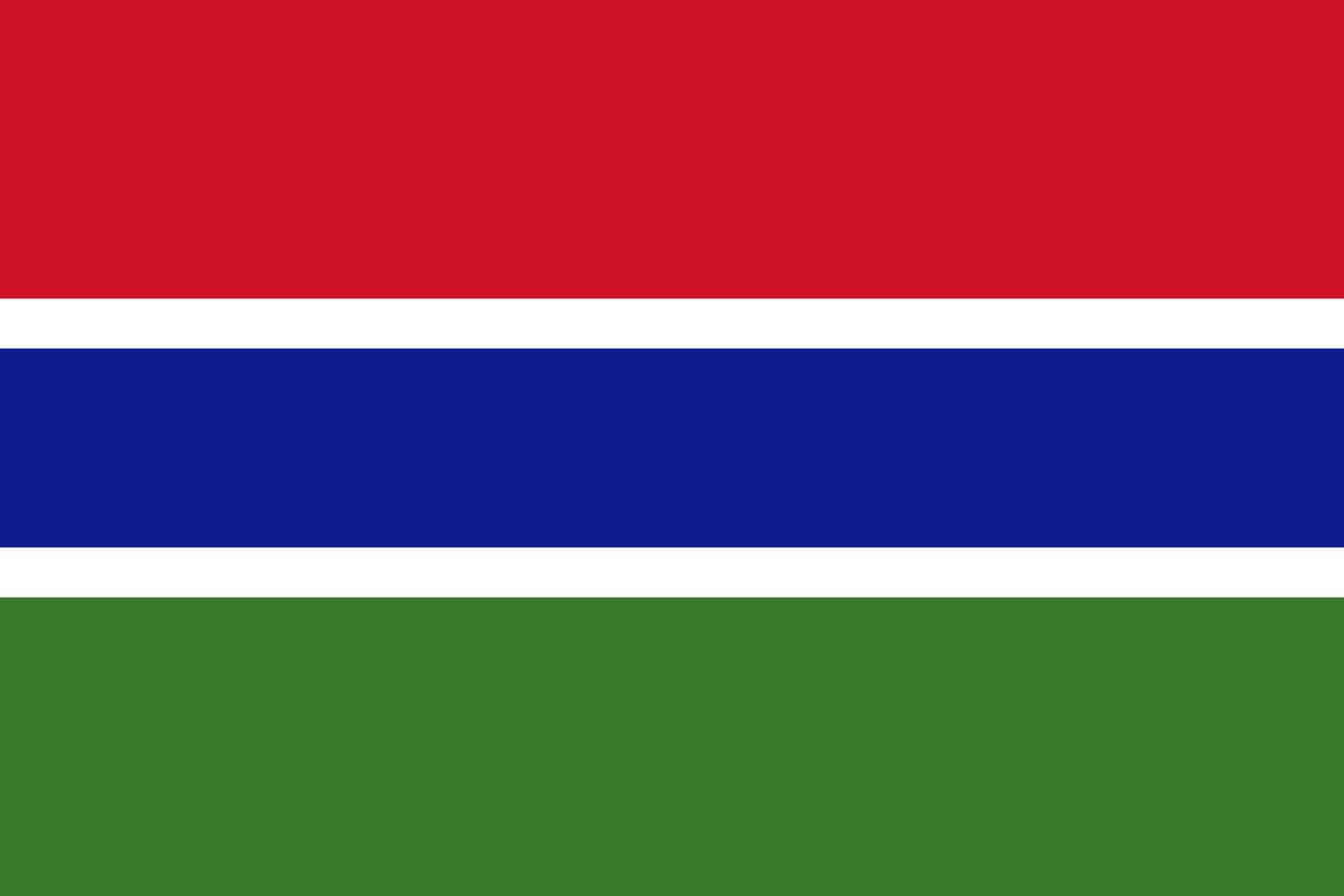
Embark on a journey of fascinating facts and lesser-known trivia about the Gambian flag. Discover unique features within the flag’s design that hold hidden symbolism. Uncover stories of famous incidents or events involving the flag that have left an indelible mark on the nation’s history and identity.
Rich Tapestry of History
- 1965: The current flag of Gambia is adopted on February 18, symbolizing the unity and aspirations of the Gambian people.
- Colors and Symbolism: The red color represents the sun and the savannah, the blue represents the River Gambia, the green stands for the lush forests, and the white stripes represent peace. Together, they illustrate the beauty and diversity of Gambia’s landscape.
- Three Horizontal Bands: The distinct bands of color on the flag, with the River Gambia symbolized by the blue stripe, highlight the nation’s unique geographical feature.
- National Identity: The flag embodies Gambia’s rich history, cultural heritage, and the nation’s ongoing pursuit of unity, prosperity, and renewal.
These historical facts highlight significant moments in the history of the Gambian flag, showcasing its role in shaping Gambia’s national identity and symbolizing its struggles and aspirations throughout the years.
Flag-Related Symbols and Emblems
A flag is not alone in representing the nation’s identity. Explore additional national symbols and emblems closely associated with Gambia, understanding their significance and how they relate to the flag. Delve into their historical and cultural roots, further enriching your understanding of Gambia’s heritage. It’s easy to travel and make a Gambia tour to visit the country’s best destinations.
Symbolisms of the Gambia Flag
The flag of Gambia holds several symbolic elements that represent the nation’s history, values, and aspirations. Here are the symbolisms of the Gambia flag presented in itemized form:
- Red Color: Represents the sun and the savannah, highlighting the nation’s warm climate and geographical features.
- Blue Color: Symbolizes the River Gambia, which is an essential feature of the country’s landscape, providing life and sustenance to its people.
- Green Color: Represents the nation’s lush forests and agricultural wealth, pointing to Gambia’s fertile lands and natural resources.
- White Stripes: These symbolize peace and unity among the Gambian people.
- Flag’s Design: Reflects Gambia’s aspirations, cultural heritage, and unity among its citizens.
- National Identity: The flag serves as a powerful symbol that unifies the Gambian people, reminding them of their shared heritage and cultural identity.
- National Aspirations: Through its design and elements, the flag embodies the aspirations and values of the Gambian nation, including peace, unity, and the nation’s rich connection to its natural environment.
These symbolisms in the flag contribute to the country’s sense of identity and pride, reflecting its historical journey and cultural significance.
Flags of Similar Countries or Regions
Examining the flags of neighboring countries or regions can provide intriguing insights. Compare and contrast the flags, exploring similarities in design, colors, or symbolism. Uncover historical and cultural connections between flags, shedding light on shared influences or distinctive identities.
Gambian Flag vs Senegalese Flag

Similarity: Both flags feature a combination of green, yellow, and red colors.
Difference: The Senegalese flag has a green star in the center, whereas the Gambian flag features blue, red, and green bands separated by thin white stripes.
Gambian Flag vs Guinea-Bissau Flag
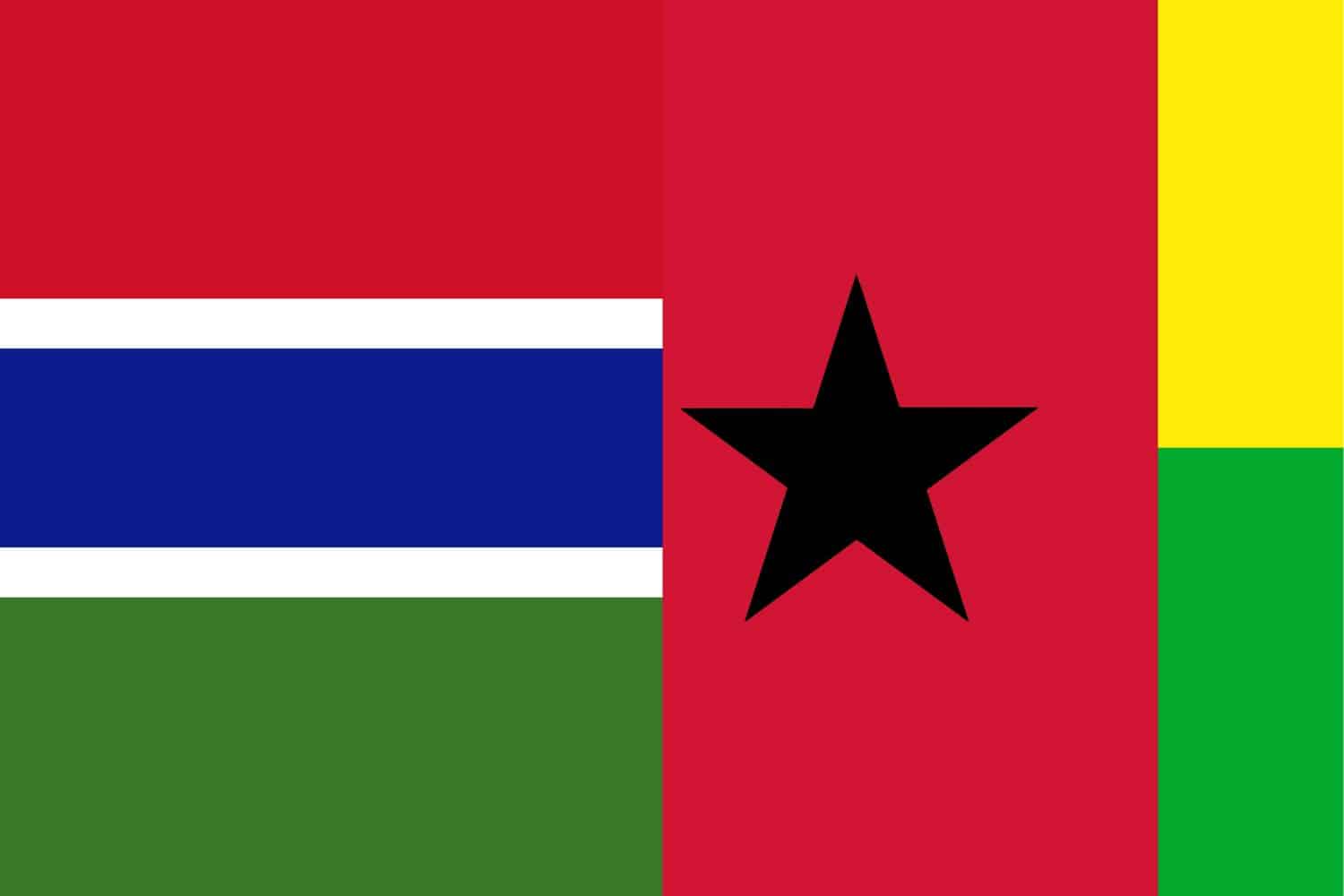
Similarity: Both flags incorporate the pan-African colors of red, yellow, and green.
Difference: The Guinea-Bissau flag has a black star in the center of a yellow field and a red stripe on the fly side. In contrast, the Gambian flag is characterized by its horizontal bands and white fimbriations.
Gambian Flag vs Guinea Flag
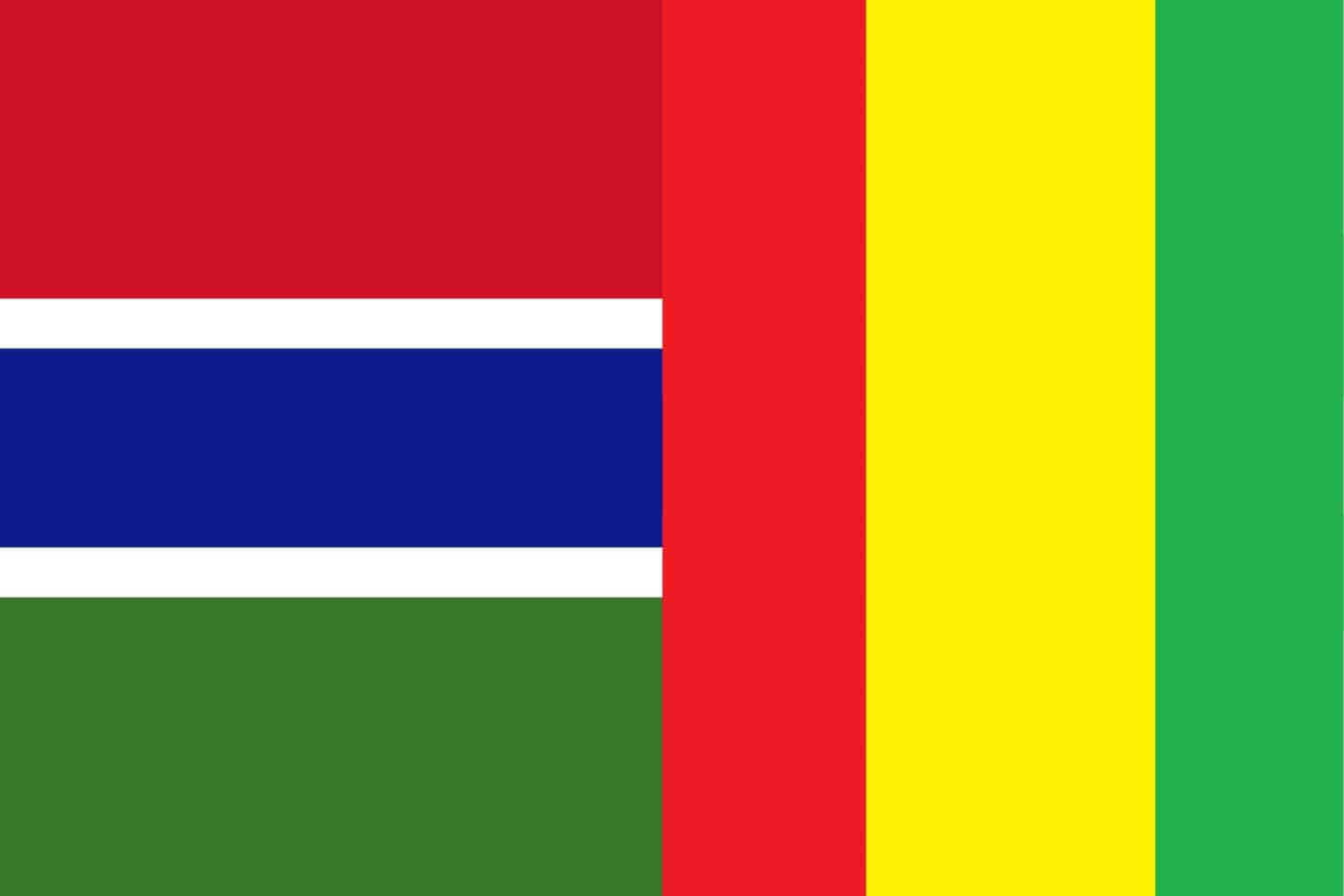
Similarity: Both flags use red, yellow, and green colors.
Difference: The Guinea flag features vertical stripes of red, yellow, and green, while the Gambian flag has horizontal bands of blue, red, and green separated by thin white stripes.
Gambian Flag vs Mali Flag
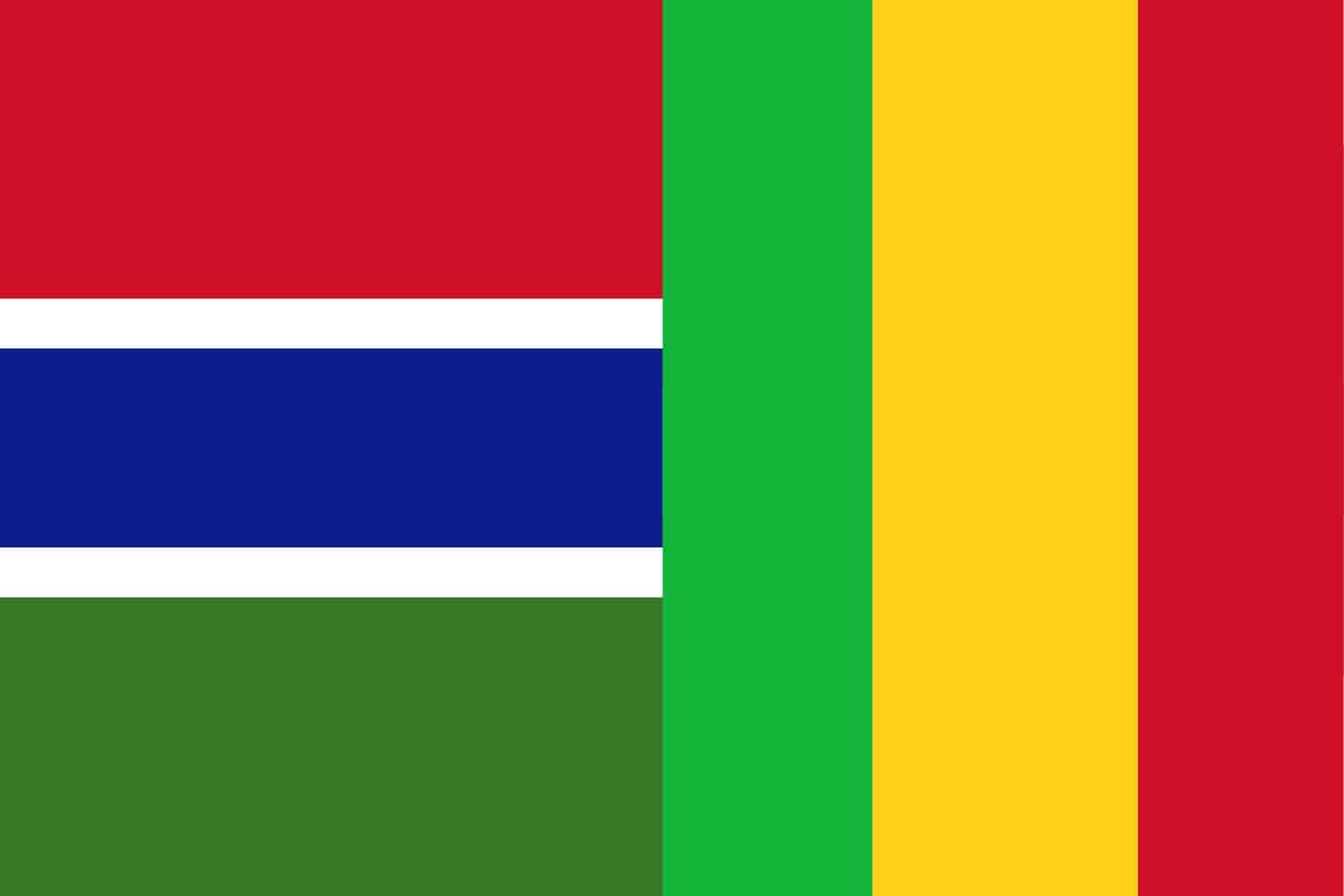
Similarity: Both flags showcase the pan-African colors of green, yellow, and red.
Difference: The Mali flag consists of vertical stripes of green, yellow, and red. The Gambian flag, on the other hand, has horizontal bands of blue, red, and green separated by thin white stripes.
Gambian Flag vs Sierra Leone Flag
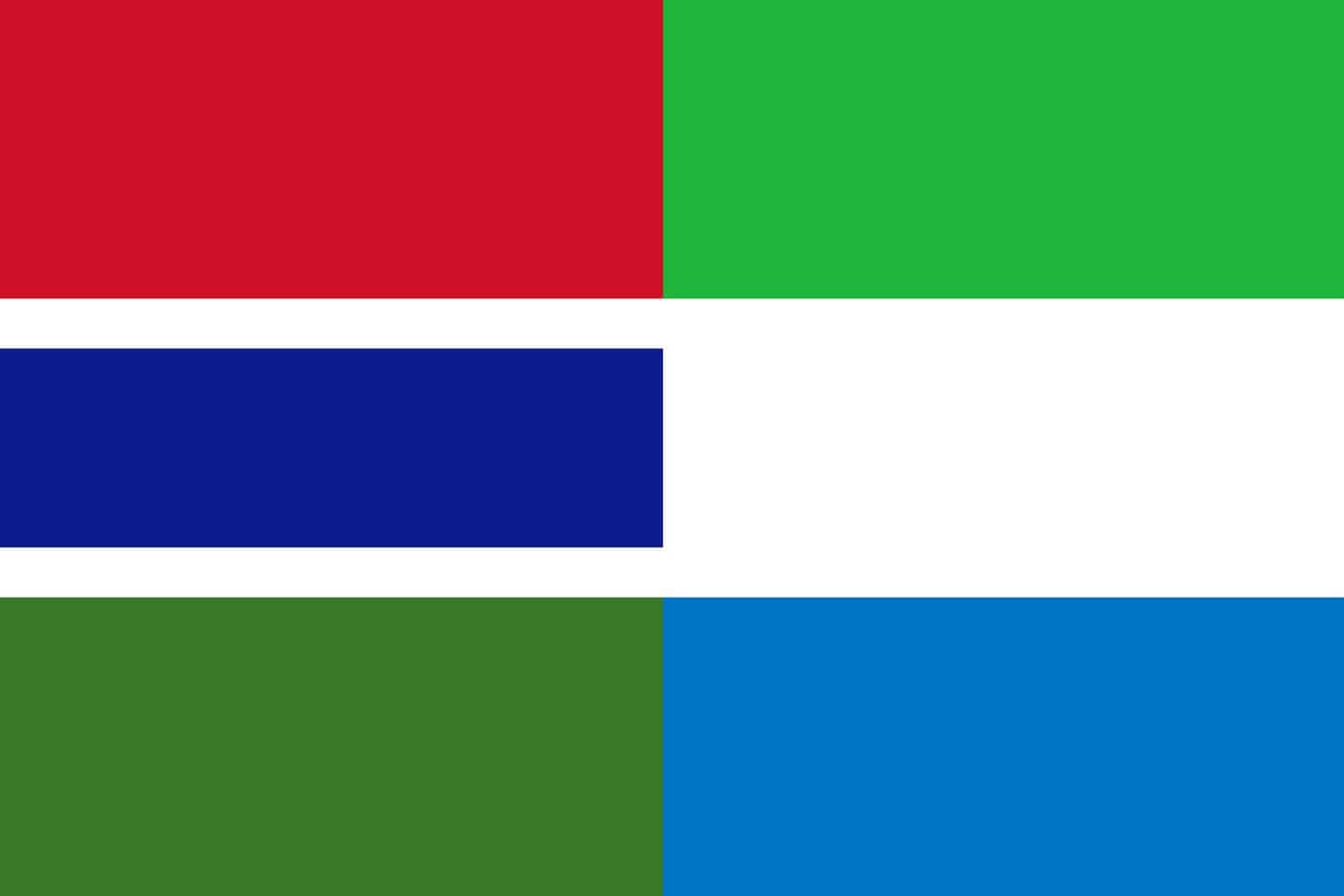
Similarity: Both flags feature green and blue colors.
Difference: The Sierra Leone flag is divided into horizontal stripes of green, white, and blue. The Gambian flag, in contrast, displays horizontal bands of blue, red, and green with thin white fimbriations separating them.
Gambian Flag vs Ghana Flag
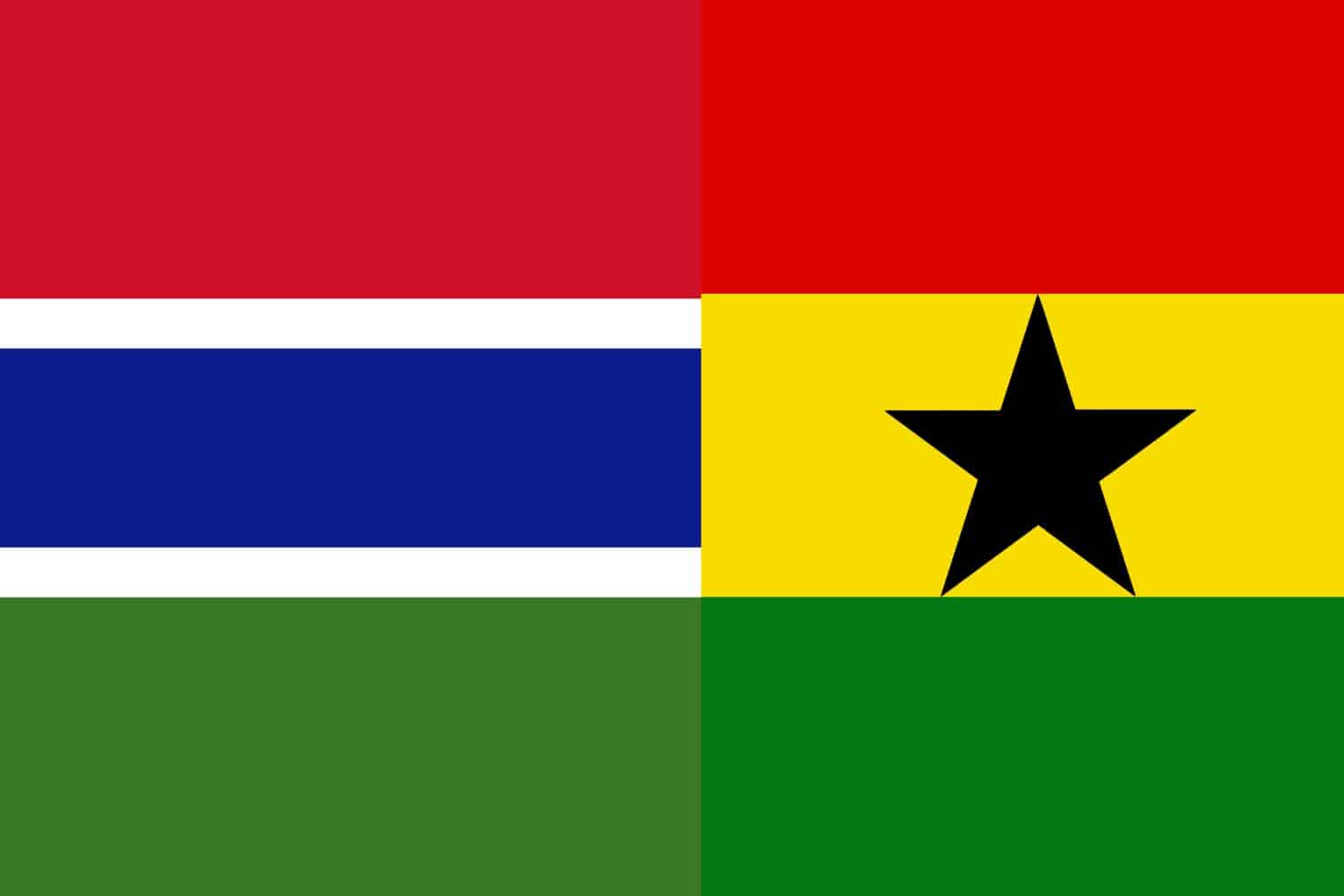
Similarity: Both flags have red, yellow, and green colors.
Difference: The Ghanaian flag includes a black five-pointed star in the center of the yellow band, while the Gambian flag presents its colors in horizontal bands of blue, red, and green, separated by thin white stripes.
Frequently Asked Questions (FAQs)
Discover answers to common questions related to the Gambia flag picture. From its historical origins to the symbolism behind its elements, find concise and informative responses that address inquiries commonly posed by those curious about Gambia’s flag.
What do the colors of the Gambian flag represent?
The Gambian flag consists of five horizontal stripes: red on the top, blue in the middle with white borders, and green at the bottom. The red stands for the sun, the blue represents the River Gambia, and the green symbolizes the country’s lush forests and agriculture. The white stripes denote peace and unity.
When was the Gambian flag adopted?
The flag was officially adopted on February 18, 1965, when The Gambia gained independence from British colonial rule.
Who designed the Gambian flag?
The flag was designed by Louis Thomasi, a prominent Gambian statesman.
Has the flag undergone any changes since its adoption?
No, the design of the Gambian flag has remained consistent since its adoption in 1965.
How is the Gambian flag differentiated from other African flags?
Its unique combination of colors and the presence of white stripes bordering the blue stripe distinguishes it from other African flags.
What is the protocol for flying the Gambian flag at half-mast?
The Gambian flag is flown at half-mast during periods of national mourning or on specific dates of remembrance. The protocol is generally consistent with international standards for flying flags at half-mast.
Are there any specific flag etiquette rules in The Gambia?
Like many countries, it’s considered respectful to ensure the flag doesn’t touch the ground, is illuminated if flown at night, and is replaced if it becomes worn or damaged.
Is there a specific day in The Gambia when the flag is celebrated?
February 18th is celebrated as Independence Day in The Gambia, and the flag plays a significant role in the festivities.
How is the Gambian flag used in national ceremonies or sports events?
The flag is prominently displayed during national ceremonies, parades, and sporting events. It is a symbol of national pride and unity.
Are there any regional or historical flags that were used in The Gambia before the current one?
Before independence, as a British colony, The Gambia used the British Blue Ensign with the colony’s badge on the fly.
More About Gambia
[the-post-grid id=”50357″ title=”Gambia Main page”]
